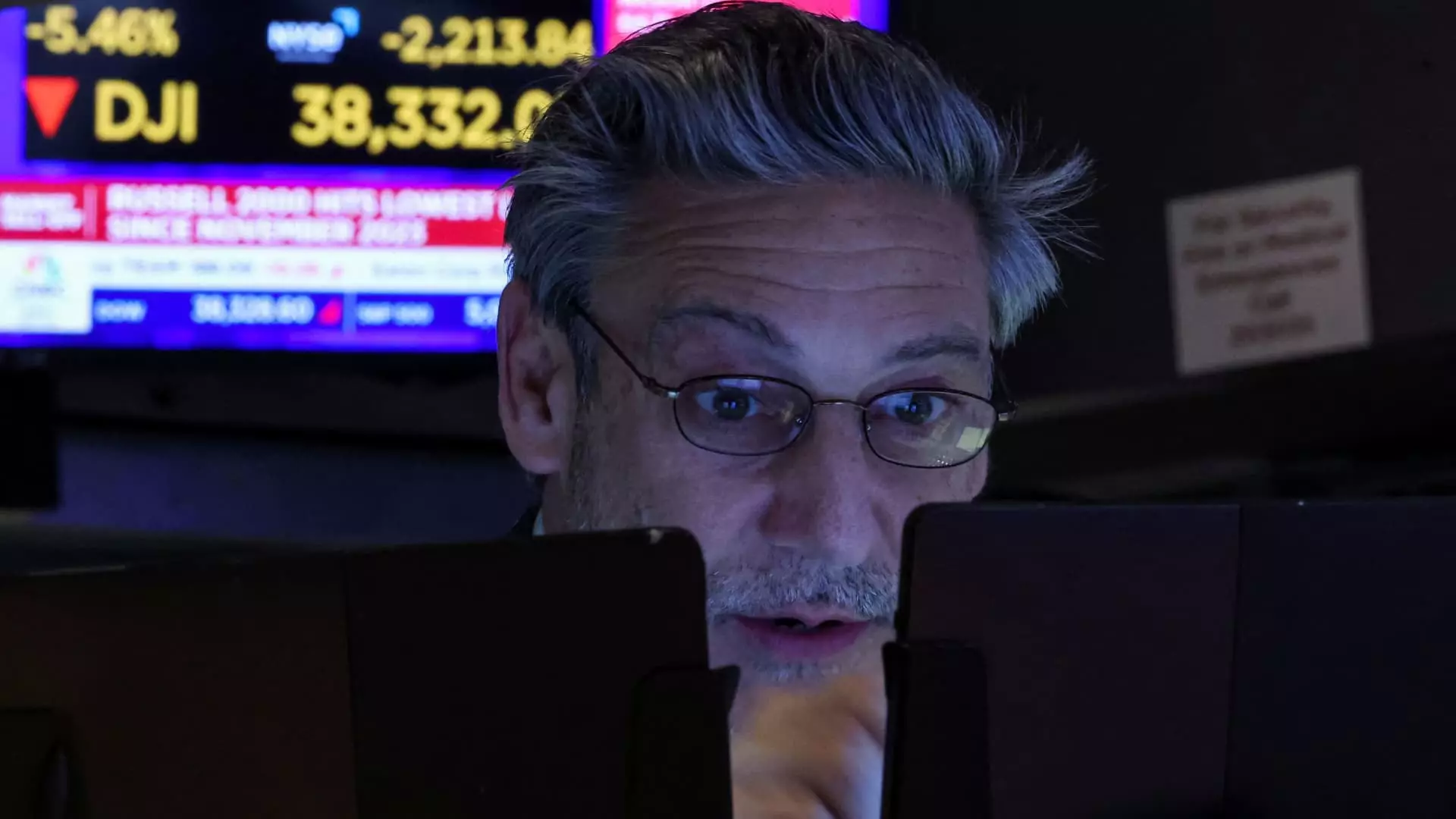The current trading environment resembles a terrifying rollercoaster ride, one that investors are painfully strapped into against their will. As we’ve seen in recent exchanges, stock prices plummet with alarming rapidity, prompting trading halts reminiscent of some of Wall Street’s darkest days. These “circuit breakers” were designed as safety nets, allowing investors a moment to collect their thoughts before making any rash decisions amidst market tumult caused by circumstances often out of their control. And with recent indicators showing that financial markets are struggling against the weight of escalating global tensions, it’s clear that while trading halts may offer temporary respite, they signify much larger issues lurking on the horizon.
The backdrop to this chaos is distasteful—heightened international trade tensions incited primarily by dubious tariffs imposed by the previous administration. President Trump’s policies created an environment where volatility became the norm, rather than the exception. Now, as tariffs contribute to rising import prices and diminish consumer spending, one has to wonder whether we are merely witnessing the aftermath of terribly misguided policies or if we are on the brink of an entirely new crisis.
The Fragility of Confidence: A Hidden Danger
The recent depletion of investor confidence reflects a broader malaise. The heavy-handed measures that once brought a false sense of security are now merely Band-Aids on a gashing wound. The trading halts may act as stops on a highway to disaster, but they fail to address the underlying issues that cause these frightening downward spirals to begin with. When circuit breakers are triggered—like during the traumatic trading session where the S&P 500 lost nearly 6%—it’s not just the numbers that matter; it’s the psychology of those numbers. What does it say about the integrity of our markets when panic reigns supreme and investor sentiment drastically shifts to a mindset of fear and uncertainty?
Investors have been stripped of their positive outlook, and the warning signs are etched across the performance of indices like the Dow Jones, which recently endured its largest one-day decline since June 2020. Amidst such chaos, even the most seasoned traders are grasping for a semblance of stability. This alarming erosion of confidence from retail to institutional investors alike is both troubling and demoralizing.
The Market’s Recurrent Pattern: History’s Grim Shadow
Stock markets have historically demonstrated a concerning pattern of volatility—a phenomenon that often serves as a precursor to more significant economic downturns. The staggering plunge of nearly 11.98% back in March 2020 is a painfully fresh memory, only to be eclipsed by the current downward trend. What we are witnessing now is the chronic unravelling of market stability, and if history has taught us anything, it is that this cyclical downturn is unlikely to reverse itself without substantial systemic changes.
Many may argue that technicalities like circuit breakers serve to protect us from disaster. However, they are merely symptomatic treatments that distract from our impending financial vulnerabilities. After all, these improvised solutions do nothing to alleviate the underlying economic malaise created by years of unsound fiscal policies and geopolitical strife. Every bated breath in the face of such rapid declines adds to a collective anxiety that cannot be ignored.
Time for Real Solutions: A Political Awakening?
For our markets to truly recover, we require a holistic reevaluation of policies and reforms that address these tumultuous undercurrents. It is time for leaders from across the political spectrum to rise above partisan squabbles and tackle economic issues head-on. The solutions need to be as bold as the problems are deep—whether it’s creating realistic trade agreements that encourage domestic growth or revising fiscal strategies to facilitate economic resilience.
The grim specter of market volatility is no longer a pattern we can afford to ignore. With indices like the Nasdaq and S&P flirting with bear market territory, what is needed now is genuine leadership that prioritizes sound economics over political grandstanding. Stakeholders must unite to forge pathways that strengthen our financial frameworks—before we become mere captives of the volatile specter that looms over us.
The challenges we face are intimidating, but with constructive dialogues and real policy change, a resurgence is not only possible but necessary. The current state of the markets should serve as a wake-up call, urging us to navigate these turbulent waters wisely. As we reflect on the mounting pressures affecting these indices, we quickly realize that they are but warning signs of a deeper and more profound malaise in our financial system.

